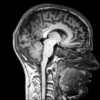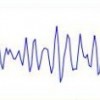In an exciting development for neuroscience, the identification of thoughts through brain codes leads to deciphering the brain’s dictionary. Two hundred years ago, archaeologists used the Rosetta Stone to understand the ancient Egyptian scrolls. Now, a team of Carnegie Mellon University scientists has discovered the beginnings of a neural Rosetta Stone. By combining brain imaging […]








Recent Comments